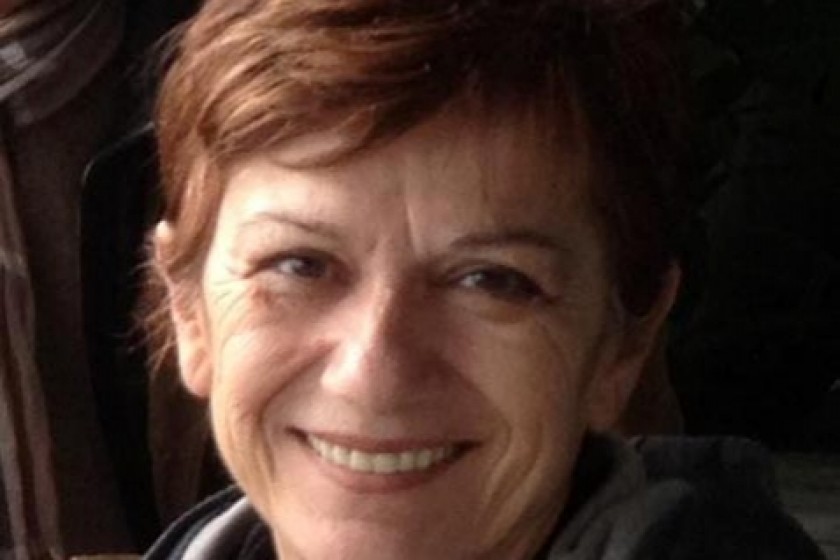
Ayse Gunaysu : “Hrant was assassinated. That’s the reality of Turkey”
Hetq speaks to Ayse Gunaysu, a reporter for the Turkish daily newspaper Özgür Gündem and a columnist for the Boston-based Armenian Weekly.
Ayse, when was the first time you heard about Hrant Dink?
We knew of him since the first issue of Agos in 1996. It was our duty to follow closely everything about non-Muslim communities in Turkey, related human rights violations, their problems and their history.
Did you ever meet him?
Yes. As the the Committee Against Racism and Discrimination at the Human Rights Association, Istanbul, we were in close contact with him since 1996. Our exhibition in 1997 entitled “Tuzla Children’s Camp, a Story of Seizure”, was a product of our close work with Hrant Dink, as he was the one who provided the story, the photographs, and all the material about the Camp.
And he wrote a special article about his experiences at the camp and how he felt about the its seizure by the government. Then we turned this material into a book in three languages; Turkish, English and Armenian. Hrant Dink’s article was published in this book. So, in a way, he was a close colleague, and someone we learned a lot from in our personal relations. I visited him several times at his office in Agos to hear his opinions, to consult him, and to ask his help for various reasons related to our work.
In your opinion, who was Hrant Dink within the greater Turkish reality?
Hrant Dink was the person who was able to change the perception of Armenians in the eyes of a large section of Turkish society. This was because he made himself publicly accessible by taking part in panel discussions and interviews on mainstream TV channels. Even people who knew nothing about Armenians in Turkey learned from him and loved him, because he was able to communicate by speaking from his heart, in a sincere and straight-forward manner. On the other hand, he strove to establish a balance while speaking his mind, paying utmost attention not to alienate the Turkish public.
He even launched a campaign against the parliaments of those foreign countries who adopted decisions recognizing the Armenian Genocide. Hrant felt he had to do this to persuade the Turkish public that he was no threat to Turkey’s territorial and national unity. But, even this didn’t save him. Turkey is a place where even such a balanced, careful, and sometimes compromising approach, is not tolerated. Despite all his efforts not to offend the national feelings of the Turkish people, he was assassinated. That’s the reality of Turkey. The dark forces who killed him gave the message that the age-old state mentality would not let an Armenian stand up and speak out.
So why do you think he was killed?
I think it’s because genocide is not something that happened and finished between 1915 and 1923. It still continues with an aggressive, crude, and gross denial. In order to maintain denialism, the governments of Turkey have always had to feed nationalism to the Turkish people. Naturally, this encourages ultra-nationalist elements that enjoy strong connections to the state apparatus and its secret units.
Who, in your opinion, really ordered his murder?
I can present my personal notion because the reality is blurred and covered up. Whoever or whatever force ordered his murder was part of the state apparatus, especially the secret services and special war units that we call the “deep state”.
What has changed in Turkey after the murder of Hrant Dink?
Hrant’s assassination raised public awareness about the Armenian “question”; as it’s called. Many circles, even leftists did not pay attention to what Armenians were going through in a denialist country, under conditions of denialism. After Hrant Dink’s murder socialist leftist circles started to get involved in what the Human Rights Association (IHD) was doing for a decade before his death. But it is extremely infuriating that for this Hrant Dink had to be killed. Also, larger parts of the indifferent Turkish society not at all involved in politics came to know what Armenians in Turkey are suffering from.
After his death, many Turkish democrats boasted about the “hundreds of thousands” marching in his funeral, which makes me mad. Where were these people when he was harassed during his trials and during the fascist demonstrations in front of Agos? Did Hrant have to be killed for these “hundreds of thousands” to rally around his ideals?
 Videos
Videos Photos
Photos




Write a comment